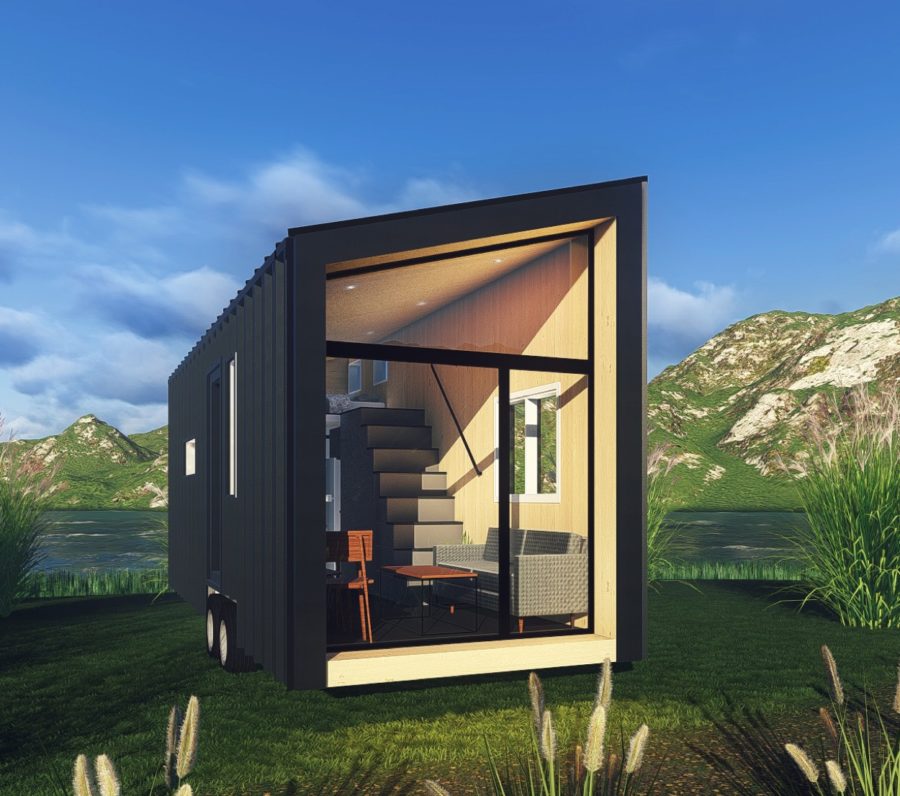As the world grapples with the challenges of sustainable living, environmental concerns, and skyrocketing housing costs, a quiet revolution is underway in the real estate sector. Tiny homes, once a fringe phenomenon, have emerged as a beacon of hope for those seeking affordable, eco-friendly, and adventurous living. This exciting new frontier is redefining the way we think about housing, community, and the concept of home itself.

In recent years, tiny homes have evolved from humble beginnings as simple, DIY projects to sophisticated, designer abodes that are as functional as they are beautiful. These mini marvels, typically ranging from 100 to 400 square feet, are perfect for individuals, couples, and small families seeking a more streamlined, low-impact lifestyle.
One of the most significant advantages of tiny homes is their affordability. With prices starting from around $30,000 to $50,000, these mini dwellings are a far cry from the expensive, sprawling houses that dominate the traditional real estate market. Add to that the reduced energy costs, lower maintenance expenses, and decreased environmental footprint, and it’s easy to see why tiny homes are becoming an attractive option for budget-conscious buyers.
But tiny homes are more than just a affordable alternative; they’re also a statement of intent. For a growing number of people, these tiny dwellings represent a rejection of the sprawling, resource-intensive lifestyle that has come to define modern living. They’re about embracing simplicity, sustainability, and a more intentional way of living.
Despite their compact size, tiny homes are remarkably versatile. Many are designed with expandable features, such as lofts and extensions, which can be easily added or removed as needed. Some even come with wheels, allowing their owners to relocate at will. This flexibility has made tiny homes a hit with nomadic types, travelers, and adventure-seekers.
Another fascinating aspect of the tiny home movement is its strong focus on community. In contrast to the isolating, atomized lifestyle often associated with suburban housing developments, tiny home communities are springing up around the country, offering residents a sense of belonging, connection, and shared purpose.
Take, for example, the burgeoning tiny home village in Portland, Oregon. This thriving community, comprising over 50 tiny homes, has become a beacon for like-minded individuals seeking a supportive, eco-friendly environment. Here, residents share common spaces, participate in group projects, and learn from one another in a spirit of mutual cooperation and respect.
However, as with any revolutionary idea, there are also challenges associated with tiny home living. One of the biggest hurdles is finding suitable land or zoning regulations that permit tiny homes. Many areas have laws that restrict or prohibit tiny dwellings, while others require costly permits and licenses.
To overcome these obstacles, some enterprising companies are now offering turnkey solutions for tiny home buyers. These innovative firms provide a one-stop-shop for everything from manufacturing and delivery to site preparation and setup.
Another area that’s seeing significant innovation is tiny home financing. While traditional lenders often view tiny homes with skepticism, a new generation of lenders is stepping up to offer specialized financing options specifically designed for these mini dwellings.
As the tiny home movement continues to gain momentum, one thing is clear: this is no passing fad. Tiny homes represent a profound shift in our relationship with the built environment, our wallets, and our planet. Whether you’re a fan of minimalist living, an eco-warrior, or simply seeking a more fulfilling lifestyle, tiny homes are definitely worth exploring.
In an era of rapid urbanization, environmental degradation, and socioeconomic inequality, tiny homes offer a powerful alternative: a more sustainable, affordable, and intentional way of living that puts people, planet, and community first. As we venture into this exciting new frontier, it’s exciting to think about the possibilities that tiny homes might hold for the future of real estate, and for the future of us all.





